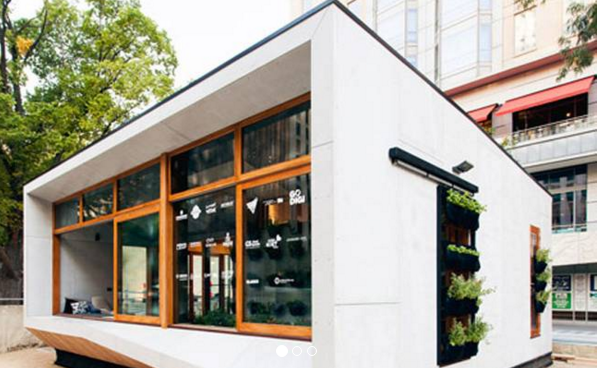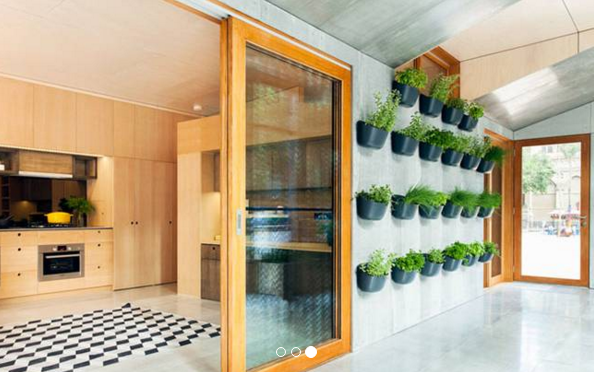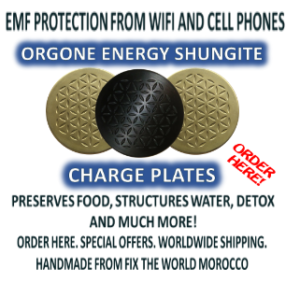To this day, the prospect of building a home fills many with dread. The reality that a ton of time, money, and materials must be expended before we can enjoy our home can be truly disheartening, especially when we must work with the knowledge that, when we do get our ‘dream home,’ we will go on paying bills to use it until we die. But what if that could all change? Wouldn’t that be an exciting prospect?
In 2015 CE purchased 25 acres of land outside of Toronto, Canada, because we wanted to explore the possibilities of living off grid, growing food and doing other projects, all while having a modern and practical setup that could be imitated and applied anywhere in the world. As time has gone on, we’ve seen some amazing things pop up that give us a lot of hope for the emergence of extremely practical and sustainable homes in our near future — homes which do not require as much work and which also give back to the environment.
Prefabricated homes came on our radar about 6 months ago as something to pay close attention to, and they are becoming a lot more mainstream as time goes on. Finding the balance between feature, price, and practicality has been the rule of thumb for designer and innovators, as any new product coming onto the market will need to convince people to switch from the common model of home building to prefab.

An awesome prefab has come out of Melbourne, Australia, by the company ArchiBlox. They are calling it the world’s first prefab home that will produce more energy than it uses during its lifetime — a big statement that we hope holds true.
The home is about 570 square feet, about the size of the average 1 bedroom condo here in Toronto. It has been designed to exceed carbon-zero expectations to deliver additional “positive contributions” to the environment. Interestingly, the positive contributions of this house are the equivalent of planting 6,095 trees. You see, in Australia, carbon positive is a good thing. It doesn’t mean you are producing more carbon, but rather that you are feeding energy back into the grid.
As stated by ArchiBlox, their Carbon Positive House is designed to “[address] the increasing levels of carbon emissions and the high levels of embodied energy that come with the construction of a standard home.” In order to test and prove their claims of carbon positivity, ArchiBlox ran a life cycle assessment on their prototype home, and the results were very promising. Energy readings suggested the unique design of the home would result in a total savings of -659 kgCO2e (carbon dioxide equivalent). This is like saving 116% per year per occupant when compared against average homes and conventional benchmarks.
Like many of the homes we have looked at that take a run at saving energy and being more sustainable, sun orientation was taken into consideration by ArchiBlox. Here in North America we are used to finding south facing homes to maximize the sun’s heat, while in Australia they look for north facing homes. This is precisely the direction Archiblox oriented their home in order to maximize sun exposure during the day, greatly helping to reduce heating and cooling costs, which happen to be virtually the most expensive part of running a home. At the same time, they got to design and enjoy a beautiful sunroom in which one could also grow food.
Designing the sunroom to serve as both the heating and lighting portion of the home allowed the designers to leave other areas more shaded, yet still well lit. In other words, the cost of cooling a home in the harsh Australian sun would no longer be an issue. As you can see in the pictures below, they chose to grow some herbs on the wall of the sunroom. Adding in a larger garden would not be an issue for avid growers.
Now this is the one thing that gets me about a lot of homes that push for sustainability and low energy costs — they need to be earth-bermed much of the time. Earth-berming is when one side of the house is essentially built into the earth or into a hill, creating a well-insulated area of the home, always opposite to the sun exposed side. While this is a great and creative way of insulating the house, and can still look great, it doesn’t seem all that practical when you consider that everyone would need to have this. How would we convert subdivisions? If houses all needed to face south and yet still be bermed, how many houses could we realistically create? While I dislike the idea of having a ton of homes in one area, this is how our world currently operates, and realistic changes need to work with our current state. It’s difficult to say if this idea could be practical in the future.
But! Archiblox did what many others suggest, using the berm and roof as a green space as well as a space for solar energy generation. They also suggest harvesting rainwater with a simple system that can be applied to the roof.
Ventilation and air flow are other important factors to consider when building a home, and Archiblox took care of this as well. Cross-ventilation is provided through in-ground cooling tubes that bring in colder air from the south side of the house. This air is then pulled through the north-facing windows near the ceiling and out into the sunroom.
While prefab homes and other exciting innovations continue to come to market, I am still left with a thirst for practical solutions to retrofit the current homes that exist in the plenty today. One of the options that fascinates me the most is energy solutions that can run without constant input (i.e. they create their own energy after some time). We have been working closely with one inventor, Paramahamsa Tewari, for 2 years now, and he has an amazing invention that could do just this. I invite you to read more about that here, as I truly believe these technologies will completely transform our future and open up an entirely new world of possibility in the world of home design.
By Joe Martino
(Source: collective-evolution.com; December 3, 2016; http://tinyurl.com/jd9se3f)













